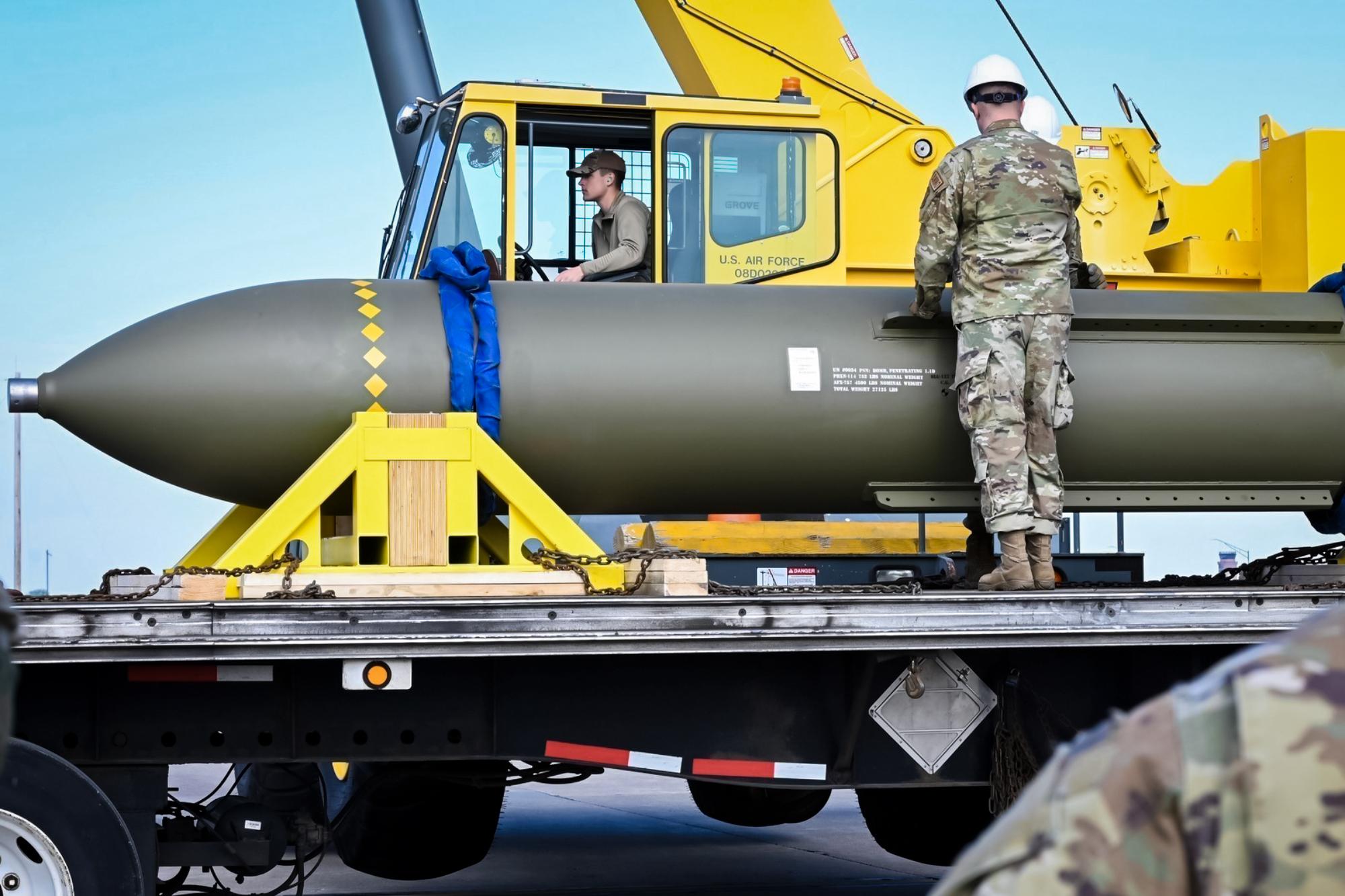The Secret 15-Year Plan Behind US Strikes on Iran

By Ryan Morgan
WASHINGTON—The United States’ B-2 stealth bomber strike on Iran’s Fordow uranium enrichment facility was the culmination of more than 15 years of study and planning, according to Chairman of the Joint Chiefs of Staff Gen. Dan Caine.
Caine joined Defense Secretary Pete Hegseth for a press briefing on June 26, in which the defense secretary said the June 21 bombing mission was a resounding success that set Iran’s nuclear development back by years.
Caine detailed the military planning that began in 2009 to design a purpose-built method to knock out the Fordow facility, which is buried hundreds of feet underground in a mountainous region of Iran.
A Briefing in a Vault
During the press briefing, Caine shed new light on the role of the Defense Threat Reduction Agency (DTRA), an organization tasked with preparing bespoke solutions to destroy highly sensitive targets, including emerging weapons of mass destruction.
“DTRA does a lot of things for our nation, but DTRA is the world’s leading expert on deeply buried, underground targets,” Caine said.
“In 2009, a Defense Threat Reduction Agency officer was brought into a vault at an undisclosed location and briefed on something going on in Iran,” Caine said, declining to identify the DTRA officer by name.

Caine said that this DTRA officer, and another unnamed member of the agency, were then tasked to work with the intelligence community to study the construction of the Fordow site.
“For more than 15 years, this officer and his teammate lived and breathed this single target: Fordow, a critical element of Iran’s covert nuclear weapons program,” Caine said.
According to the general, these two DTRA employees spent years studying everything from the geology surrounding Fordow, to the construction materials and other equipment arriving at the facility, so they could model the site and devise a plan.
“They literally dreamed about this target at night when they slept,” Caine said.

Bespoke Bombs
In the course of their study of the Fordow facility, Caine said the pair of DTRA employees leading the project soon determined the U.S. military did not have a weapon that could adequately address the challenge the fortified Iranian nuclear facility presented.
“So, they began a journey to work with industry and other tacticians to develop the GBU-57,” Caine said.
The GBU-57, also known as the Massive Ordnance Penetrator (MOP) or bunker-buster, is a 30,000-pound bomb designed to burrow and explode deep underground.
Caine said military planners then spent years testing the bomb, specifically for the Fordow facility.

“They tested it over and over again. … They accomplished hundreds of test shots, and dropped many full-scale weapons against extremely realistic targets for a single purpose: kill this target at the time and place of our nation’s choosing,” Caine said.
The general said each GBU-57 is “bespokely” designed for a specific target. He said each one dropped on the Fordow facility “had a unique desired impact angle, arrival, final heading, and fuse” corresponding to its role in the overall mission.




In addition to live-testing the GBU-57, Caine said the program to develop the heavy bunker-buster involved extensive and complex computing.
“In the beginning of its development, we had so many PhDs working on the MOP program, doing modeling and simulation, that we were quietly and in a secret way, the biggest users of supercomputer-hours within the United States of America,” he said.
Here’s How US Strikes on Iran Unfolded
The U.S. bomber strikes on Fordow were part of a larger mission, dubbed Operation Midnight Hammer, that also targeted Iran’s Natanz and Isfahan nuclear facilities.
B-2 Spirit stealth bombers tasked with striking the Fordow facility were specifically assigned to drop their GBU-57 bombs on a set of ventilation shafts running out of the underground facility. Ahead of the strikes on the Fordow facility, U.S. military planners observed last-minute changes to the site, including the placement of concrete caps on the ventilation shafts to further fortify the facility against an attack.
Caine said the first weapon dropped on Fordow was specifically designed to remove the concrete caps shielding Fordow’s ventilation shaft. From there, he said, weapons two, three, four, and five were designed to enter the shaft and burrow down into the underground complex at more than 1,000 feet per second, and explode.

The general said a sixth bomb was designed as a “flex weapon,” in case one of the first five weapons failed to achieve its intended effect.
When it comes to assessing the true damage of the strike, Caine said the U.S. intelligence community plays the leading role, rather than the military.
“We don’t grade our own homework; the intelligence community does,” Caine said.

While Caine said the intelligence community is still assessing the true damage of the U.S. strike, he indicated military planners are confident the strike was successful, based on their understanding of the weapons they used, and the fact that each weapon was observed acting as it was intended.
“The weapons were built, tested, and loaded properly,” he said. “Two, the weapons were released on-speed and on-parameters. Three, the weapons all guided to their intended targets and to their intended aim points. Four, the weapons functioned as designed, meaning they exploded.”
Caine also described the account of a U.S. fighter pilot who escorted the bomber formation and watched the bomb blasts, who Caine quoted as saying, “This was the brightest explosion that I’ve ever seen. It literally looked like daylight.”

Other Teams, Other Targets
Following Operation Midnight Hammer, Caine said he met with and thanked the pair of DTRA officers who spent years developing the Fordow strike plan.
“One of them said: ‘I can’t even get my head around this. My heart is so filled with the pride of being a part of this team. I’m so honored to be a part of this,’” Caine said.
Hegseth then read off a list of statements, including from the International Atomic Energy Agency, the Israeli Atomic Energy Commission, the Iranian Foreign Ministry, CIA Director John Ratcliffe, and others, assessing that the June 21 strike caused extensive damage to Iran’s nuclear program.
Caine expressed his gratitude to all those who helped plan and carry out the bombing mission. The general also cast Operation Midnight Hammer as a message to potential adversaries of the United States going forward.
“Our adversaries around the world should know that there are other DTRA team members out there studying targets for the same amount of time, and will continue to do so,” Caine said.



